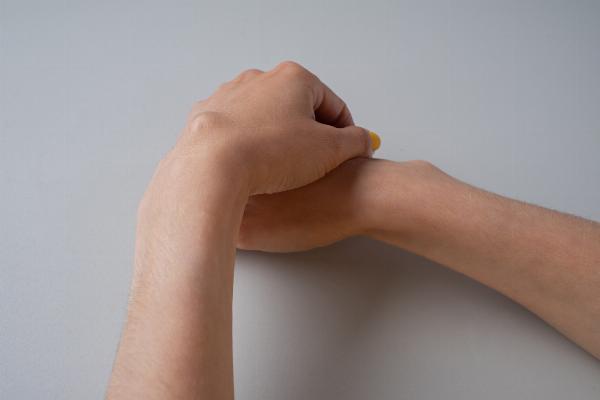Understanding Lipoma Treatment: Key Insights

Strong 8k brings an ultra-HD IPTV experience to your living room and your pocket.
Lipomas, benign fatty tumors that develop beneath the skin, are generally harmless but can cause discomfort or affect your appearance. Understanding the various treatment options available can help you make informed decisions and address your concerns effectively. Here’s a comprehensive guide to Lipoma Treatment in Dubai, including key insights into the methods, benefits, and recovery processes.
What is a Lipoma?
A lipoma is a soft, movable lump made of fatty tissue. It typically grows slowly and is usually painless. Although lipomas are benign and not a health threat, they can be cosmetically concerning or uncomfortable, especially if they appear in visible or sensitive areas.
Treatment Options for Lipomas
There are several treatment methods for lipomas, each with its own approach and benefits. The choice of treatment often depends on factors such as the size, location, and symptoms associated with the lipoma. Here’s an overview of the most common options:
1. Surgical Excision
Surgical excision is a standard method for removing a lipoma. It involves making an incision to remove the lipoma along with its capsule.
Procedure: This procedure is typically performed under local anesthesia. A small incision is made, and the lipoma is carefully removed.
Benefits: Provides a permanent solution by completely removing the lipoma, thus reducing the likelihood of recurrence. It’s suitable for lipomas of all sizes and locations.
Recovery: Recovery time varies, but most people can return to normal activities within a few weeks. Post-operative care involves managing the wound and following specific care instructions to ensure proper healing.
2. Liposuction
Liposuction is a less invasive technique that uses a suction device to remove fatty tissue from the lipoma.
Procedure: A small incision is made, and a thin tube (cannula) is inserted to suction out the fatty tissue. This method is usually performed under local anesthesia.
Benefits: Minimally invasive with less scarring compared to traditional surgery. It’s effective for smaller lipomas or those in less accessible areas.
Recovery: Recovery is generally quicker, with many people resuming normal activities within a few days. Post-procedure care involves wearing compression garments and avoiding strenuous activities.
3. Steroid Injections
Steroid injections involve injecting corticosteroids directly into the lipoma to reduce its size.
Procedure: A needle is used to inject the medication into the lipoma. This method is non-invasive and can be done on an outpatient basis.
Benefits: Effective for reducing the size of smaller lipomas or those causing mild discomfort. Minimal downtime and no surgical scarring.
Recovery: Limited recovery time with potential need for multiple sessions to achieve desired results. Monitoring for side effects is important.
4. Radiofrequency Ablation (RFA)
Radiofrequency ablation uses radiofrequency energy to target and destroy the fatty tissue of the lipoma.
Procedure: A probe is inserted into the lipoma, delivering radiofrequency energy to break down the fat cells. This is a minimally invasive procedure usually performed under local anesthesia.
Benefits: Minimal scarring and quick recovery. Suitable for smaller lipomas or those in sensitive areas.
Recovery: Generally quick with minimal discomfort. Following aftercare instructions is essential for optimal results.
5. Cryolipolysis (Fat Freezing)
Cryolipolysis, also known as fat freezing, involves freezing the fat cells of the lipoma to reduce its size.
Procedure: A cooling device is applied to the lipoma, causing the fat cells to freeze and subsequently die. The body then gradually eliminates the dead cells.
Benefits: Non-invasive with no need for anesthesia. Minimal downtime with gradual results.
Recovery: Limited recovery time, with noticeable results typically appearing over several weeks. Maintaining a healthy lifestyle can support results.
Choosing the Right Treatment
Selecting the appropriate treatment method for a lipoma depends on several factors:
Size and Location: Larger or more deeply situated lipomas may require surgical excision, while smaller or superficial ones might be suitable for liposuction or steroid injections.
Symptoms and Discomfort: If the lipoma is causing significant discomfort or affecting your daily life, more aggressive treatments like surgical excision might be preferred.
Cosmetic Concerns: For lipomas in visible areas, methods with minimal scarring and quicker recovery, such as liposuction or radiofrequency ablation, may be more appropriate.
Post-Treatment Care and Recovery
Regardless of the treatment method chosen, proper post-treatment care is crucial for optimal recovery:
Follow Care Instructions: Adhere to your healthcare provider’s guidelines for wound care, medication, and follow-up appointments to ensure a smooth recovery.
Manage Pain and Discomfort: Use prescribed pain medication as directed and apply cold compresses to reduce swelling.
Avoid Strenuous Activities: Rest and avoid activities that could strain the treated area. Gradually reintroduce physical activity as advised by your healthcare provider.
Monitor for Complications: Watch for signs of infection, excessive pain, or unusual symptoms, and contact your healthcare provider if you have concerns.
When to Seek Medical Advice
It’s important to seek medical advice if you experience:
Signs of Infection: Redness, swelling, warmth, or discharge from the treatment area.
Increased Pain: Severe or worsening pain that is not relieved by medication.
Unexpected Symptoms: Any new or unusual symptoms that concern you.
Conclusion
Understanding the various treatment options for lipomas can help you make informed decisions and address your concerns effectively. Whether you opt for surgical excision, liposuction, steroid injections, radiofrequency ablation, or cryolipolysis, each method offers different benefits and recovery experiences. Consult with a healthcare provider to determine the best approach for your specific needs and take proactive steps towards achieving a more confident and comfortable you.
Note: IndiBlogHub features both user-submitted and editorial content. We do not verify third-party contributions. Read our Disclaimer and Privacy Policyfor details.


